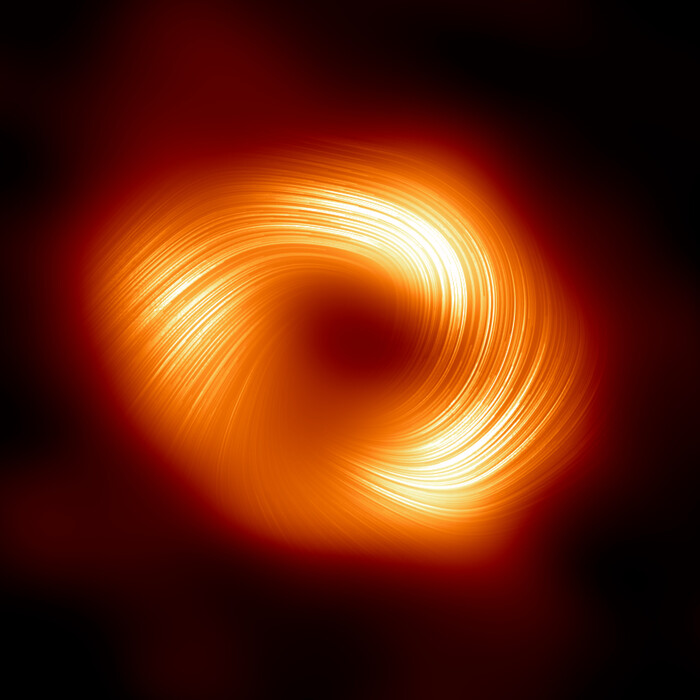The
powerful magnetic fields
that spiral around the
supermassive black hole
that hides at the center of the Milky Way,
Sagittarius A*
, have been revealed: the discovery is due to a new image of the 'monster' lurking in the heart of our galaxy, after the first one announced in 2022, this time obtained with polarized light, indistinguishable for human eyes from 'normal' light.
The result was obtained thanks to the international collaboration Event Horizon Telescope, which involves more than 300 researchers from all over the world, including many Italians from the National Institute of Nuclear Physics and the National Institute of Astrophysics.
As part of the collaboration, eight telescopes were connected together to obtain a virtual one, the size of the Earth.
The discovery was reported in two articles published in The Astrophysical Journal Letters.
The first image of Sagittarius A* revealed its similarity to the supermassive black hole M87, the first ever photographed, which lives at the center of the Virgo A galaxy, the largest in the 'nearby' universe.
And this despite Sagittarius A* being over a thousand times less massive.
This suggested that the two shared other characteristics besides their appearance and for this reason the researchers from the EHT collaboration decided to obtain another image with polarized light, that is, light that oscillates with a particular orientation.
The objective, however, was not easy, because the black hole of the Milky Way changes constantly, it does not remain still 'posing' to be photographed.
Precisely for this reason the first image of Sagittarius A* was also obtained by averaging multiple images and the same technique was used to obtain one with polarized light.
A new observation of the black hole at the center of the Milky Way is expected in April this year, and as the EHT collaboration incorporates new telescopes, it will be possible to obtain increasingly sharper images and even videos.
"The fact that M87*'s magnetic field structure is so similar to that of Sagittarius A* is significant because it suggests that the physical processes that govern how a black hole powers and launches jets could be universal among supermassive black holes , despite the differences in mass, size and surrounding environment", observes Mariafelicia De Laurentis of the Federico II University of Naples and Infn.
“This result,” she adds, “allows us to refine our theoretical models and simulations, improving our understanding of how matter is affected near the event horizon of a black hole.”
Having managed to image both supermassive black holes in polarized light is a great achievement, because it offers new ways to compare different black holes, and as the technology progresses, the images are likely to reveal even more secrets about similarities and differences.
"These new results provide stringent limits on the accretion models of Sagittarius A*", notes Kazi Rygl of INAF in Bologna: "In the future, we will be able to better understand these aspects of the nature of the black hole at the center of our galaxy."
Reproduction reserved © Copyright ANSA

